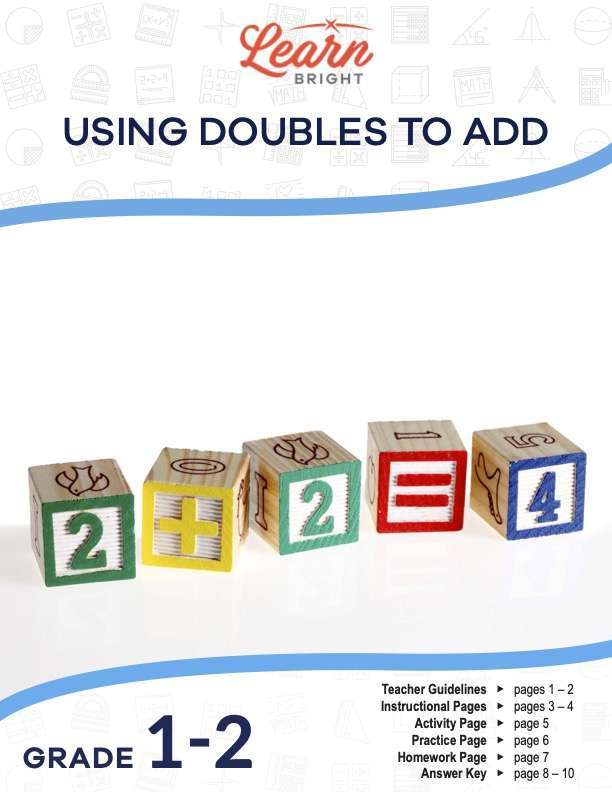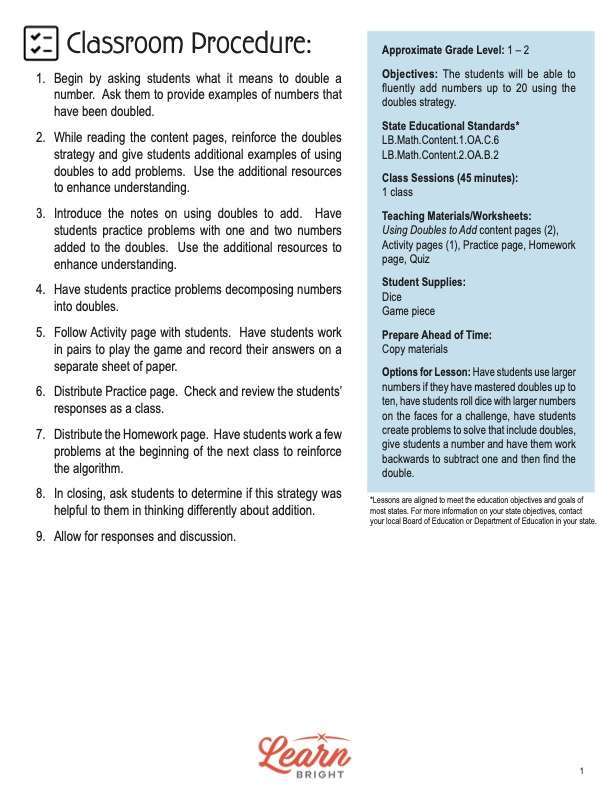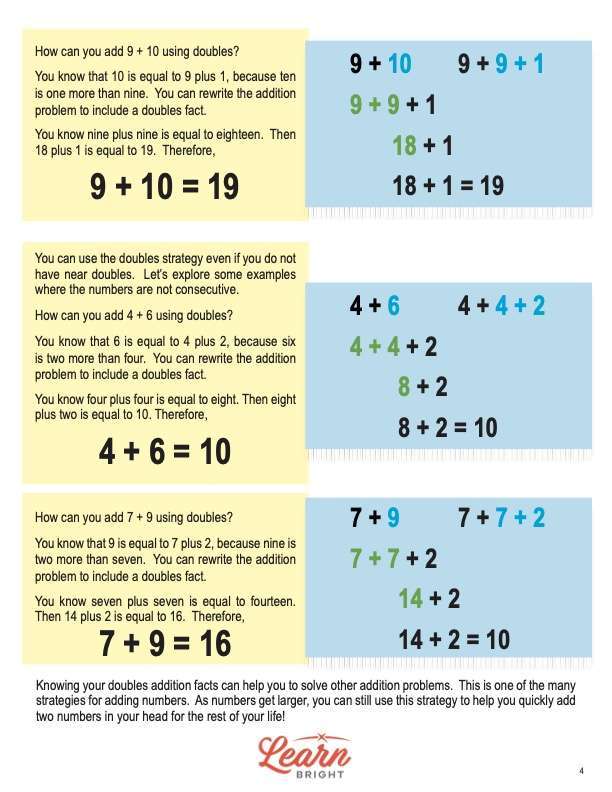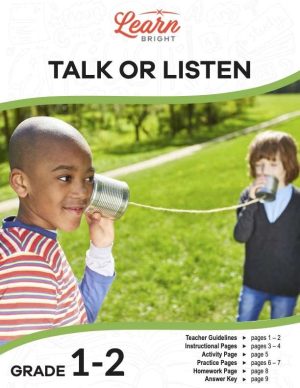Description
What our Using Doubles to Add lesson plan includes
Lesson Objectives and Overview: Using Doubles to Add explains the concept of adding numbers up to 20 using the doubles strategy. The lesson is for students in 1st grade and 2nd grade.
Classroom Procedure
Every lesson plan provides you with a classroom procedure page that outlines a step-by-step guide to follow. You do not have to follow the guide exactly. The guide helps you organize the lesson and details when to hand out worksheets. It also lists information in the blue box that you might find useful. You will find the lesson objectives, state standards, and number of class sessions the lesson should take to complete in this area. In addition, it describes the supplies you will need as well as what and how you need to prepare beforehand. The supplies you will need for this lesson are dice, game pieces, and the handouts. To prepare for this lesson ahead of time, you can gather the supplies and copy the handouts.
Options for Lesson
Included with this lesson is an “Options for Lesson” section that lists a number of suggestions for activities to add to the lesson or substitutions for the ones already in the lesson. If your students have mastered doubles up to 10, you can have them use larger numbers. You can also have students create problems to solve that include doubles. A final optional addition to this lesson is to give students an odd number and have them work backward instead.
Teacher Notes
The teacher notes page includes lines that you can use to add your own notes as you’re preparing for this lesson.
USING DOUBLES TO ADD LESSON PLAN CONTENT PAGES
The Using Doubles to Add lesson plan includes two pages of content. The lesson begins by reminding students that using math facts that they already know can make adding much easier. For example, students already know doubles and how to use them. Near doubles are two numbers that follow each other (for example, 7 and 8 or 10 and 11). We also call these consecutive numbers.
We can use doubles to help us add near doubles quickly. The lesson uses an example to illustrate this: 3 +4. Because we know that 3 + 3 = 6 (it’s one of our doubles facts), we can change 3 + 4 to 3 + 3 + 1 to quickly find the answer (4 is equal to 3 + 1). We can then solve the new equation. 3 + 3 + 1 = 6 + 1 = 7! Therefore, 3 + 4 = 7.
The lesson then goes over three more examples. To add 9 + 10 using doubles, we can rewrite the equation as 9 + 9 + 1. We know that 9 + 9 = 18. Therefore, 9 + 9 + 1 = 18, and 18 + 1 = 19. That means that 9 + 10 = 19!
We can use this strategy even if we don’t have near doubles, like in the previous examples. To add 4 + 6 using doubles, we first split the 6 into 4 + 2. That means our new equation is 4 + 4 + 2. We can add 4 + 4 using doubles to get 8. Therefore, 4 + 4 + 2 = 8 + 2, and 8 + 2 = 10. So 4 + 6 = 10!
The lesson includes one final example to solidify students’ understanding. If you know your doubles addition facts, they can help you solve other addition problems. This is just one strategy for adding, and you can use it even with larger numbers. This is a good strategy to help you solve addition problems in your head for your whole life!
USING DOUBLES TO ADD LESSON PLAN WORKSHEETS
The Using Doubles to Add lesson plan includes three worksheets: an activity worksheet, a practice worksheet, and a homework assignment. You can refer to the guide on the classroom procedure page to determine when to hand out each worksheet.
DICE ROLL ACTIVITY
The activity will be a really fun way for students to practice what they learned. The worksheet has a table of 28 spaces. Each space (except for the START and END spaces) has an equation, such as 5 + 7. Students will divide into partners as they play the game. They will take turns rolling a dice and moving their game pieces around the board. There are arrows to guide them in the right direction. On a separate sheet of paper, they will solve the problem of the space they land on. The game continues until someone gets to the END space.
SUM OF THE DICE PRACTICE WORKSHEET
The practice worksheet requires students to use the dice again. There are three columns on the worksheet: Number, Doubles, and Doubles Plus One. They will roll two die and find the sum of the two numbers. That number goes in the Number column. In the second column, they will write an equation doubling the number from the first column. After that, they will write an equation in the third column adding the first number and that number plus 1. If they roll 11, for example, they will put 11 in the first column, 11+11=22 in the second, and 11+12 in the third.
USING DOUBLES TO ADD HOMEWORK ASSIGNMENT
Finally, the homework will again assess students’ comprehension of using doubles to add numbers. First, they will fill in the table of doubles from 1+1 through 10+10. Second, they will answer a series of 18 equations using the doubling strategy.
Worksheet Answer Keys
This lesson plan includes answer keys for the activity worksheet, the practice worksheet, and the homework assignment. If you choose to administer the lesson pages to your students via PDF, you will need to save a new file that omits these pages. Otherwise, you can simply print out the applicable pages and keep these as reference for yourself when grading assignments.









